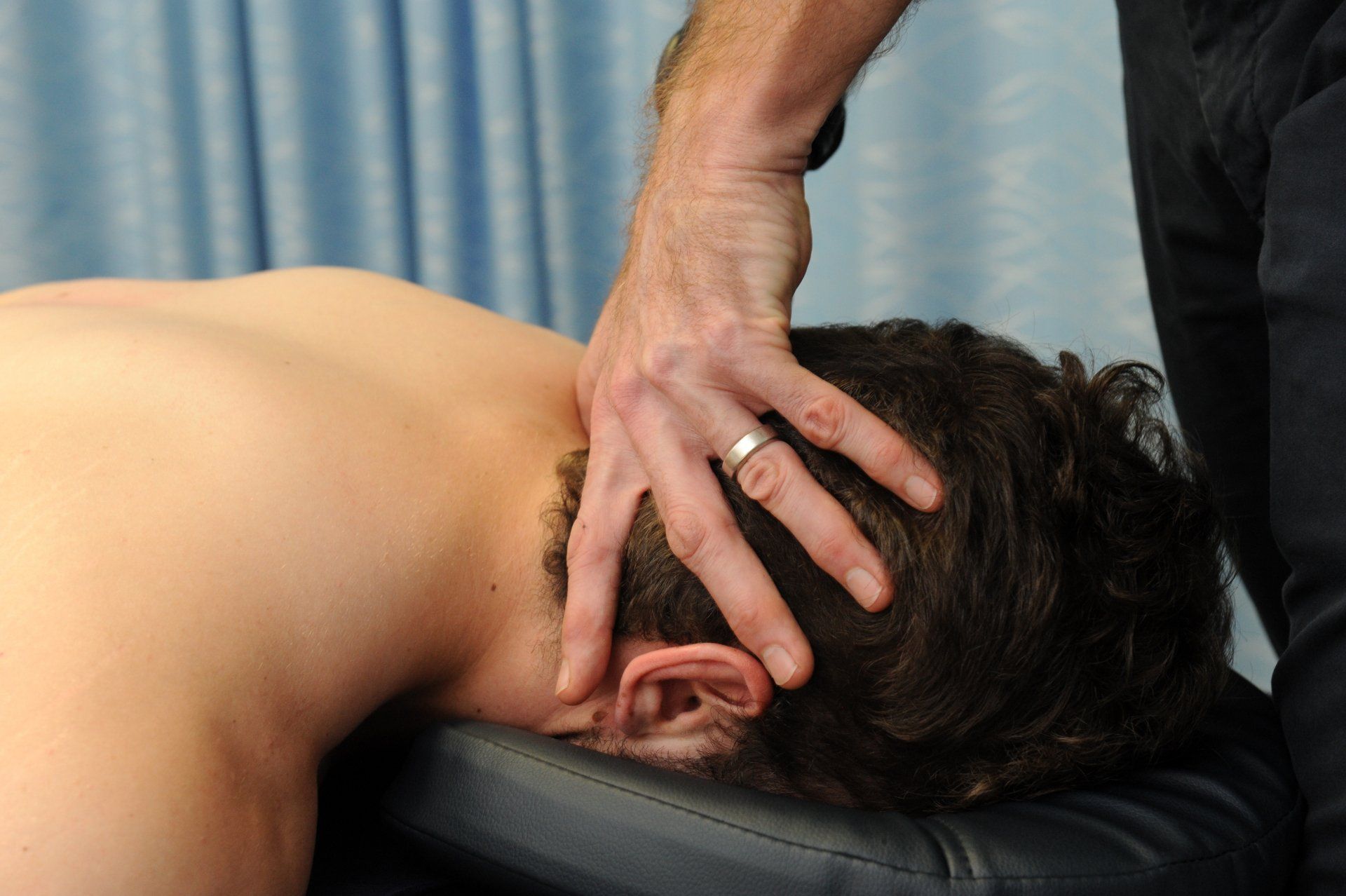The Shoulder - Multi-Directional Instability
The shoulder sacrifices stability for mobility, increasing injury risk in high repetition activities.

Multi-directional instability (MDI) of the shoulder is a condition which commonly affects young athletes and individuals with naturally looser joints. MDI can cause pain and hinder daily activities, but with proper treatment and rehabilitation, many people can manage their symptoms effectively. In this blog, we’ll explore the causes, symptoms, treatment options, and prevention strategies for MDI of the shoulder.
Anatomy of the Shoulder
The shoulder joint is highly mobile, which is great for activities like throwing, lifting, reaching and swimming. However, this flexibility also increases its vulnerability to instability. The shoulder joint, or glenohumeral joint, consists of the humeral head (ball) and the glenoid (socket) of the shoulder blade. A network of muscles, ligaments, and the labrum (a fibrocartilage ring surrounding the glenoid) provides support and stability. When these supporting structures are too lax or weakened, the humeral head can move excessively, leading to MDI.
What is Multi-Directional Instability?
MDI is a form of shoulder instability where the shoulder becomes unstable in multiple directions: typically forward (anterior), backward (posterior), and downward (inferior).
Unlike traumatic dislocations, which often result from a specific injury, MDI develops gradually due to genetic ligament laxity, muscle imbalances, or repetitive overhead movements causing micro-trauma.
MDI can be especially common in athletes and those with hypermobility disorders, as their shoulder structures are naturally more flexible. It seems to effect people mostly in their 20s and 30s and becomes less common after 40.
Causes of Multi-Directional Instability
- Genetic Ligamentous Laxity: Some people are born with looser ligaments, which increases the risk of instability. This trait, often hereditary, can affect other joints as well.
- Repetitive Overhead Movements: Any sporting pursuit that involves repetitive arm movement can cause micro-traumatic stress culminating in joint laxity. Sports like swimming, tennis, gymnastics, athletics (discuss, shot put, javelin), throwing sports (baseball, cricket) and water polo to name a few.
- Muscle Imbalance: Weakness or imbalances in the shoulder and scapular muscles can contribute to the development of MDI by failing to provide adequate stability during movement.
Symptoms of Multi-Directional Instability
Common symptoms of MDI include:
- Pain and Discomfort: Pain may occur with movement, especially with activities involving arm elevation.
- Sensation of "Slipping" or "Subluxation": Many individuals report a feeling of the shoulder slipping partially out of place, often causing them to avoid certain movements.
- Weakness and Fatigue: Shoulder muscles may become easily fatigued, limiting endurance and strength.
- Limited Range of Motion: Movement restrictions may develop over time due to discomfort or compensatory muscle stiffness.
Diagnosing Multi-Directional Instability
MDI can be diagnosed by a physiotherapist in the clinical setting. Diagnosing MDI involves taking a thorough history and completing a physical examination, including specific tests to evaluate ligamentous laxity, such as the sulcus sign or load and shift tests. Your physio will ask you to perform movements which cause you to experience symptoms to assess for signs of instability. They will also assess your range of movement and muscle strength.
MDI presents similarly to other shoulder conditions, such as shoulder subluxation, impingement, and rotator cuff tendinopathy, so make sure you get a clear diagnosis early.
Do I need a scan?
Most people don’t require imaging. Sometimes during the clinical exam symptoms are identified that may warrant further investigation to assist with management and planning. MRI, X-ray, or ultrasound can be helpful, and your physiotherapist will discuss if this is appropriate for you.
Treatment for Multi-Directional Instability
In the absence of other conditions (such as a labral injury or rotator cuff tear), MDI can be managed effectively with a conservative (non-surgical) approach. This usually involves:
- Education: The first step in managing MDI is understanding what has caused your symptoms, how you can improve them, and time frames involved.
- Physiotherapy: Strengthening the muscles that stabilize the shoulder is key to managing MDI. Control of the scapular (shoulder blade) plays a crucial role in shoulder stability, as does the strength and timing of activity in the rotator cuff muscle group. A physiotherapist will guide you through exercises that are specific to your presentation and target the rotator cuff, deltoid, and scapular muscles to enhance shoulder stability. Check out a general exercise program here.
- Activity Modification: Limiting activities that place high stress on the shoulder, like repetitive overhead motions, can reduce symptoms. Your physio will work with you to modify your activities so that you can still do the things you love with less difficulty.
- Bracing and Taping: In some cases, a brace or supportive taping may help stabilize the shoulder during activities, especially for athletes or individuals engaging in high-demand physical activities.
Will I need surgery?
For some people surgery may be considered after 9-12 months of failed conservative management or for those people with co-morbidities. Procedures such as capsular tightening or labral repair can restore stability to the joint. Minimally invasive arthroscopic surgery is often preferred due to a shorter recovery time.
Preventing Multi-Directional Instability
If you have a genetic predisposition or engage in sports that place you at risk of shoulder joint MDI, there are preventative strategies you can use to lower your risk and maintain shoulder health.
- Strength Training: Regularly strengthening the rotator cuff and scapular muscles can improve stability and reduce the risk of MDI.
- Postural Awareness: Maintaining good posture helps distribute shoulder forces evenly, reducing stress on the joint.
- Warm-Up and Stretching: Warm-up exercises before engaging in sports or workouts prepare the shoulder for movement and help prevent strain.
- Avoid Overuse: Athletes or active individuals should be mindful of repetitive stress and incorporate rest days to allow the shoulder to recover.
The Take Home
While MDI can be challenging, many people successfully manage it with the right combination of treatment, load management, and lifestyle adjustments. MDI can be confused with other conditions which require different management approaches, so if you have shoulder pain get it assessed properly by a qualified health professional. Early intervention, strength training, and activity modification can make a significant difference, helping you regain function and prevent future complications.
Got shoulder pain and/or instability and want to get it sorted? Give us a call now.
At Movement for Life Physiotherapy, we can assess and diagnose the cause of your shoulder pain and let you know whether you have multi-directional instability, a labral injury, a rotator cuff tear, or if there is something else going on. With a clear diagnosis and tailored management plan, we'll help get you back to the things you love sooner.
Call us now on
Sources
- DeFoor, M.T. and Sheean, A.J. (2024). Shoulder Multidirectional Instability. In Orthopaedic Sports Medicine: An Encyclopedic Review of Diagnosis, Prevention, and Management (pp. 1-16). Cham: Springer International Publishing.
- Hippensteel, K. J., Uppstrom, T. J., Rodeo, S. A., et al. (2023). Comprehensive Review of Multidirectional Instability of the Shoulder. The Journal of the American Academy of Orthopaedic Surgeons, 31(16), 871–880. https://doi.org/10.5435/JAAOS-D-22-00983
- Johnson, D. J., & Tadi, P. (2023). Multidirectional Shoulder Instability. In StatPearls. StatPearls Publishing.
- Longo, U.G., Rizzello, G., Loppini, M., et al. (2015). Multidirectional instability of the shoulder: a systematic review. Arthroscopy: The Journal of Arthroscopic & Related Surgery, 31(12), pp.2431-2443.
- Spanhove, V., Van Daele, M., Van den Abeele, et al. (2021). Muscle activity and scapular kinematics in individuals with multidirectional shoulder instability: a systematic review. Annals of Physical and Rehabilitation Medicine, 64(1), p.101457.
- Stokes, D. J., McCarthy, T. P., and Frank, R. M. (2023). Physical Therapy for the Treatment of Shoulder Instability. Physical medicine and rehabilitation clinics of North America, 34(2), 393–408. https://doi.org/10.1016/j.pmr.2022.12.006
- Warby, S. A., Watson, L., Ford, J. J., et al. (2017). Multidirectional instability of the glenohumeral joint: Etiology, classification, assessment, and management. Journal of hand therapy : official journal of the American Society of Hand Therapists, 30(2), 175–181. https://doi.org/10.1016/j.jht.2017.03.005
- Watson, L., Warby, S., Balster, et al. (2016). The treatment of multidirectional instability of the shoulder with a rehabilitation program: Part 1. Shoulder & elbow, 8(4), 271–278. https://doi.org/10.1177/1758573216652086
- Watson, L., Warby, S., Balster, S., et al. (2017). The treatment of multidirectional instability of the shoulder with a rehabilitation programme: Part 2. Shoulder & elbow, 9(1), 46–53. https://doi.org/10.1177/1758573216652087








